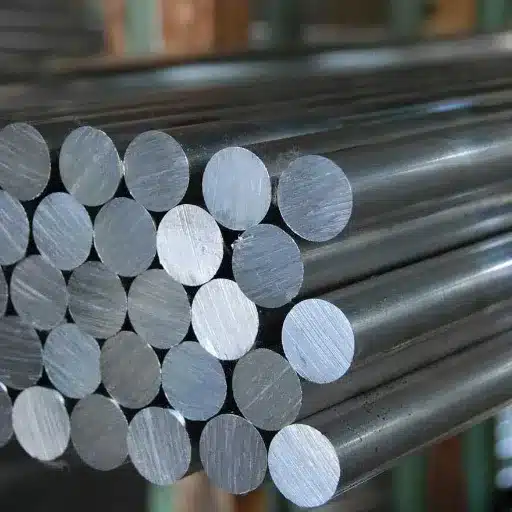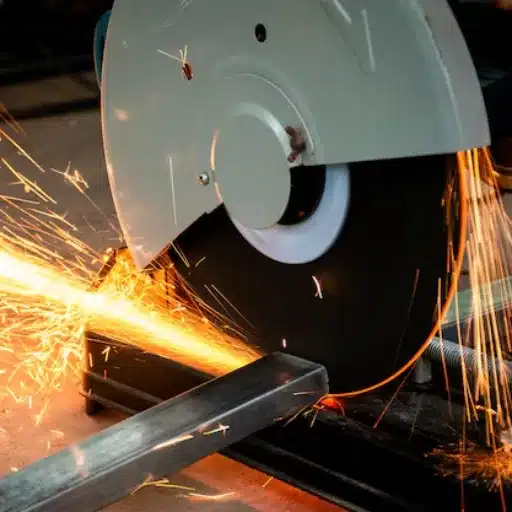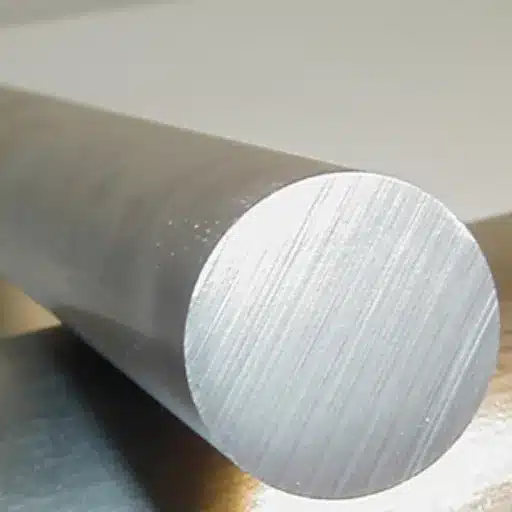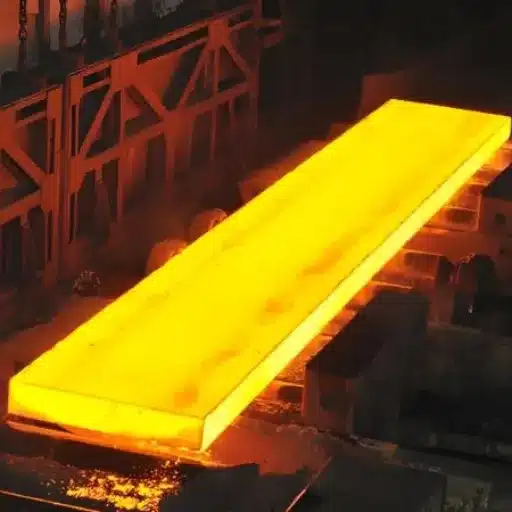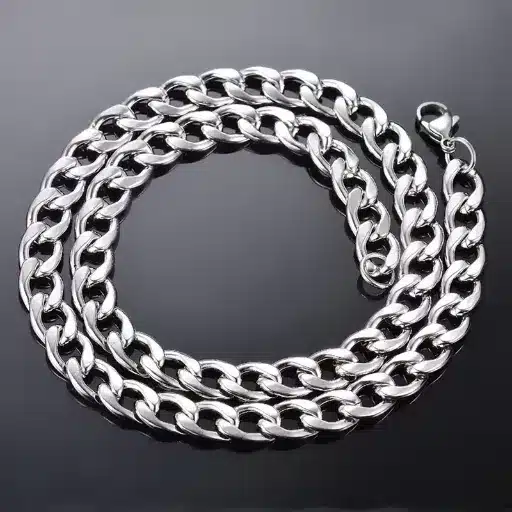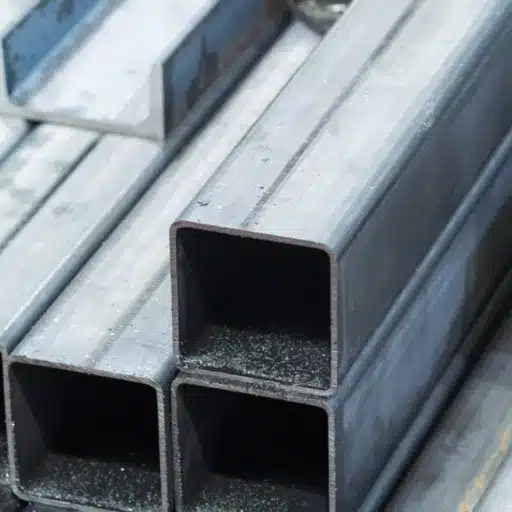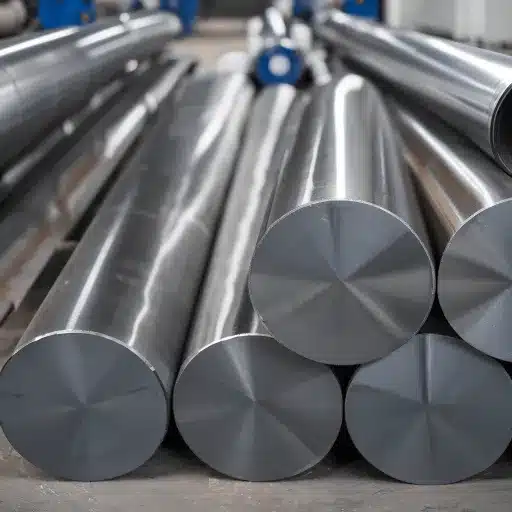Monel 400 stands as a unique material in the engineering and metallurgy field for its unusual combination of strength, corrosion resistance, and versatility. This nickel-copper alloy has firmly etched its place across industries-from marine engineering to chemical processing-for being able to endure harsh environments and extreme conditions. So, what is it that makes this material so special and of high demand? Through this write-up, one will understand the properties that provide this alloy with superior performance, its common applications, and why it continues to be chosen for essential projects all the world over. Whether a novice engineer or a seasoned expert with seeking additional information on this alloy, this booklet will be helpful throughout the way!
Introduction to Monel Alloy

Monel 400 is special because of its being peculiar with properties such as high strength, corrosion resistance, and the ability to perform in extreme environments. Due to its versatility and durable nature, it is fit for demanding applications in marine engineering, chemical processing, and aerospace.
What Is Monel Alloy?
Monel alloy comprises several nickel-copper alloys renowned for their corrosion resistance and high strength. Among all grades, Monel 400 is more widely used and has in its constitution almost 67% nickel, 23% copper, and slight traces of iron, manganese, and other elements. This composition makes the alloy stand up in performance when it faces harsh environments like seawater, acid, and alkaline.
Key Performance Characteristics:
- Melting range: 2370°F to 2460°F (about 1300°C to 1350°C)
- Tensile strength: 70,000 to 100,000 psi
- Elongation: Around 30% in annealed condition
- Exceptional fatigue resistance
- Outstanding resistance to chloride stress corrosion cracking
Owing to its superior metallurgical properties, the Monel 400 brand has superb mechanical strength and toughness over a wide range of temperatures-from sub-zero to high. Moreover, it has a melting range of 2370°F to 2460°F (about 1300°C to 1350°C), thereby giving way to its utilization in high-end applications. By-the-by, it has excellent fatigue resistance, which makes it preferable in industries where reliability is a priority.
Exhaustive laboratory and practical uses have established Monel 400 as an outstanding metal to resist chloride stress corrosion cracking, one of the most frequent maladies of metal. Industry reports cite its tensile strength to be averaging between 70 hundred thousand to 100 thousand psi, whereas elongation is around 30% in an annealed condition, balancing both durability and flexibility when subjected to stress. This enhanced strength and durability make Monel 400 the material of choice in marine engineering, chemical processing, and aerospace manufacturing.
Significance in Various Industries
Owing to its extraordinary attributes, Monel 400 finds its usage across industries primarily where tough performance is required in adverse environments.
🚢 Marine Engineering
Because of the alloy’s resistance to aquatic corrosion, Monel 400 finds usage in marine environments. These applications include seawater pump shafts, piping systems, heat exchangers, and fasteners. Its resistance to the pitting and crevice corrosion assures its reliability even under long exposure to salt water; studies suggest that Monel 400 will maintain its integrity for 50 years, thereby reducing maintenance cost in marine operations.
⚗️ Chemical Processing
Because of Monel 400 resistance against acidic and alkaline solutions, it is highly regarded in the chemical industry. Applications for this alloy also involve sulfuric acid, hydrofluoric acid, and many harsh chemicals. Data indicate that Monel 400 equipment such as reactors and storage tanks has demonstrated top-class service life under conditions of high temperature and pressure. Its ability to withstand all kinds of pH levels provides a safer working environment for chemical processes.
✈️ Aerospace Manufacturing
It is within the aerospace realm that Monel 400 strength and resistance to thermal stress are worthy of real consideration. It has fuel tanks, exhaust systems, and structural components among its typical applications. Further accounts indicate that Monel 400 maintains a consistent performance level over extended periods of aerospace operation, leading to improved safety and reliability.
Properties of Monel 400 Alloy
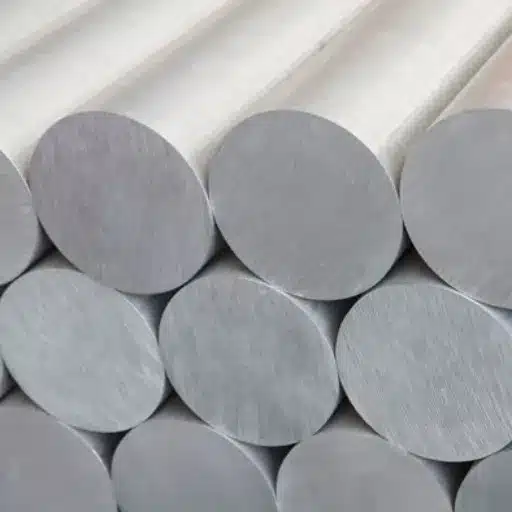
Chemical Composition of Monel 400
Monel 400, a mixture of nickel and copper, is renowned for its amazing corrosion resistance and superior performance in very adverse conditions. An approximate value given for the chemical composition of Monel 400 is as follows:
| Element | Symbol | Composition Range |
|---|---|---|
| Nickel | Ni | 63% min. |
| Copper | Cu | 28% to 34% |
| Iron | Fe | 2.5% max. |
| Manganese | Mn | 2% max. |
| Silicon | Si | 0.5% max. |
| Carbon | C | 0.3% max. |
| Sulfur | S | 0.024% max. |
Due to this composition, it offers Monel 400 an excellent combination of strength, toughness, and corrosion resistance. Even though high nickel content makes it withstand sharply acidic and alkaline environments, copper in the matrix imparts resistance against seawater and other chloride-laden environments. Due to these properties, it finds applications in chemical processing, marine engineering, and oil and gas industries.
Mechanical Properties of Monel 400
Monel 400 is characterized by its excellent mechanical properties, allowing it to be used in engineering applications requiring a very stringent combination of physical properties. Key mechanical properties of Monel 400 as remaining from standard composition and usual testing conditions are given below:
| Property | Value (Imperial) | Value (Metric) |
|---|---|---|
| Ultimate Tensile Strength (UTS) | 70,000 – 85,000 psi | 483 – 586 MPa |
| Yield Strength (0.2% offset) | 25,000 – 50,000 psi | 172 – 345 MPa |
| Elongation (at failure) | 35 – 50% | 35 – 50% |
| Hardness | Rockwell B70-B80 | Rockwell B70-B80 |
| Melting Point | 2,370°F – 2,460°F | 1,300°C – 1,350°C |
| Density | 0.318 lb/in³ | 8.80 g/cm³ |
Monel 400 maintains its mechanical integrity over a wide temperature spectrum from cryogenic lows to an elevated temperature of around 1,000°F (538°C). Thanks to this alloy’s strength and ductility in adverse environmental conditions, this makes it useful in applications such as pump shafts, heat exchangers, and fasteners working in corrosion mechanisms.
Historical Developments of Monel Alloy
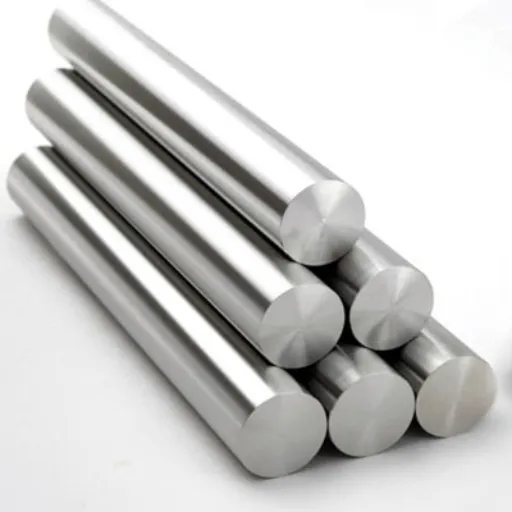
Introduced in the first part of the 20th century, Monel alloys, among which Monel 400 is prominent, were developed at the International Nickel Company (INCO). Having the president of the company, Ambrose Monell, as the patron, these alloys were engineered to provide industrial applications with superior corrosion resistance and strength.
Discovery and Early Applications
The Monel alloy was first developed by the International Nickel Company (INCO) in 1905, with the name being derived from Ambrose Monell, an ex-president of the company. Monel alloy came into existence when copper and nickel ores-were extracted from nature together, refined, and amalgamated to create substances such as Monel 400, a nickel compound consisting chiefly of nickel (about 63%) and copper (28%-34%) with traces of iron, manganese, carbon, and silicon.
This unique composition endowed Monel with exceptional strength and resistance to corrosion that could converse in many different harsh environments.
Monel 400 was early found particularly suited for maintaining corrosion resistance in saltwater environments, which encouraged applications in marine engineering for propeller shafts and seawater valves and equipment for fishing trawlers. It also acquired applications in high-temperature industries such as chemical processing and oil refineries because of its melting point of approximately 2370°F (1300°C) and its superb mechanical properties. By 1950, Monel alloys were becoming systematically employed in military and aerospace fields: furthering industrial revolution with fuel tanks for ballistic missiles and high-performance components for jet engines.
Evolution Over the Years
Monel alloy has, over the years, continued to steadily carve a niche for itself by forging an unshakable reputation that offers a promise of an engineering brand to the changing needs of various industries with its outstanding properties like corrosion resistance, strength at elevated temperatures, and durability. Constant advancements in alloy composition and machining process are continually improving their performance, culminating in various specialized versions such as Monel K-500, which combines good corrosion resistance with increased strength from the addition of said aluminum and titanium.
Market Growth Statistics:
As per recent industry data, the demand for Monel alloys has seen a slow and steady rise, with the global market for corrosion resistance alloys slated to reach over $9 billion by 2030 owing to the expanding industrial infrastructure and environmental concerns.
Monel alloys today find application in modern-day diverse industries like marine engineering for seawater valves and pump components due to excellent resistance to seawater corrosion. The oil and gas industry is further profiting from Monel alloys in heat exchangers and pipelines, ensuring reliability in harsh environments.
Applications of Monel 400 Alloy in Modern Technology
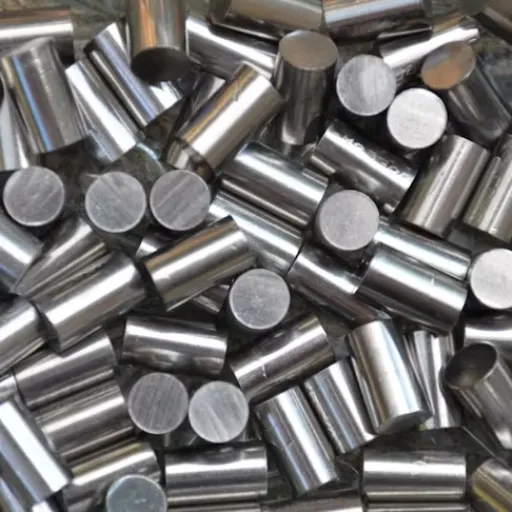
Monel 400 enjoys wide application in the fields of modern technology for its outstanding corrosion resistance and strength capabilities, along with durability. I have seen it in use in marine engineering, chemical processing equipment, and components for aerospace given its property to withstand extreme environments. Its importance cannot be overstated for any industry that depends on materials that are dependable and long-lasting.
Industrial Application of Monel 400 Alloy
The Monel 400 alloy is well-known for its strength, corrosion resistance, and versatility and hence is an essential material in several industries. These fields demand the effectiveness of Banks under conditions consisting of seawater, acids, and high temperatures.
1. Marine Engineering
It is widely used in marine engineering applications as it offers excellent resistance against corrosion due to seawater and biofouling. Typical uses are for propeller shafts, seawater pump parts, and valves meant for underwater operations.
📈 Growth Rate: Marine industry applications have grown by approximately 15% in the last decade
2. Chemicals and Petrochemical Processing
The alloy is best resistant to the acidic and alkaline environments of process plants, such as heat exchangers, reactors, and piping systems. Due to Monel 400’s popularity in Hydrofluoric acid and Sulfuric acid environment, its applications have increased support to industries that handle aggressive chemicals.
💰 Cost Savings: Maintenance costs reduced by almost 30% due to low material degradation
3. Aerospace
The aerospace industry looks favorably at Monel-400 due to its proven strength and resilience to harsh environments. The important applications in making turbine blades, exhaust ducts, etc., perform well under varying temperature and atmospheric conditions, which enhances the life of the aircraft parts.
Marine Applications
Monel 400 performs well in marine conditions, posing thus a preferred maritime application material. Because it offers excellent resistance against seawater corrosion and biofouling, Monel 400 is used in shipbuilding, offshore structures, and desalination plants. Its resistance against an alternate high level of salinity and temperature ensures that this material will live the longest under harsh marine conditions.
Key Marine Applications:
- Seawater systems: Pump shafts, seawater valves, and propeller shafts
- Shipbuilding: Hull components and marine hardware
- Offshore structures: Platform components and piping systems
- Desalination plants: Heat exchangers and piping
- Specialized equipment: Submarines and mine detection equipment (due to non-magnetic properties)
It is, for example, widely used in seawater systems such as pump shafts, seawater valves, and propeller shafts, in which other materials would begin to pitting, crack, or corrode. Studies and data prove that Monel 400 maintains almost unchanged mechanical integrity in seawater after long exposure. Furthermore, since it is nonmagnetic, it is consequently used in submarines and mine detection equipment.
Advantages and Disadvantages
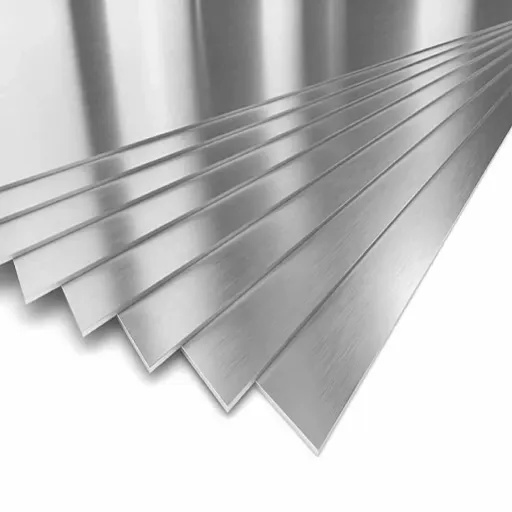
Resistance to corrosion adds to Monel alloys’ allure in marine and chemical fields. They are unrivaled in strength against extreme environments, making another feature, their non-magnetic nature, desirable for specialized equipment. These benefits notwithstanding, one has to admit the costly and difficult to machine nature of Monel can pose significant limitations compared to other materials.
✅ Advantages
- 🛡️ Superior Corrosion Resistance: Exceptional performance in marine and chemical environments
- 💪 High Strength: Maintains integrity across wide temperature ranges
- 🧲 Non-magnetic Properties: Ideal for specialized equipment
- ⏱️ Longevity: 50+ year service life in marine applications
- 🌊 Salt Spray Resistance: Over 10,000 hours before serious corrosion
- 🔧 Better Machinability: Compared to titanium alloys
❌ Disadvantages
- 💰 High Initial Cost: 50-100% markup over 316L stainless steel
- ⚡ Limited Availability: Supply chain delays for specialty material
- 🔧 Machining Challenges: Requires special tooling and expertise
- 📊 Budget Constraints: May not be suitable for small-scale projects
Peculiar Advantages Over Other Materials
Monel 400 makes a claim for a number of advantages that place it above many competing materials for technically demanding service especially where durability, resistance, and performance are paramount. Unlike common stainless steel, Monel 400 offers extraordinary resistance to corrosion in marine environments where normal steel alloys are degraded by saltwater.
Performance Comparison:
According to industry information, Monel 400 can resist salt spray for over 10,000 hours before sustaining any serious corrosion, whereas for stainless steel, pitting starts in half that time. Monel 400 also maintains its mechanical properties at temperatures ranging widely from cryogenic low to 1,000°F (538°C) on the high side-high temperature worthy of consideration.
Compared to titanium alloys, Monel 400 also provides better machining and welding characteristics, resulting in lower labor costs in either manufacture or repair.
Limitations and Considerations
While excellent in durability, corrosion resistance, and cost-effectiveness, certain considerations must be weighed when using Monel 400 owing to some drawbacks. Among the more severe hindrances is its initial cost price high; Monel 400 is much costlier than the likes of 316L stainless steel, with about 50-100% markup depending on how the market ebbs and flows. This can hamper small-scale undertakings or projects working on a tight budget.
Then, there is the question of availability; due to its specialty and explicit demand for a stringent production schedule, the supply chain of Monel 400 at times may encounter delays making it less intuitive for expedited projects. Machining-wise and with costs involved, Monel 400 being a nickel-based alloy, enjoys medium machinability requiring special tooling and expertise.
Reference Sources
-
Chemanalyst – Monel Market Report
This report outlines the key target audience for Monel, including manufacturers, stakeholders, and government bodies. It also provides insights into the market dynamics and applications of Monel alloys.
Source Link -
Verified Market Reports – Monel Alloy Market
This source discusses the preferred applications of Monel alloys, particularly in environments requiring resistance to harsh elements like seawater, heat, and chemicals.
Source Link -
TechSci Research – Monel Market Report
This report highlights the use of Monel alloys, especially Monel 400, in shipbuilding and marine environments due to their corrosion resistance. It also provides market trends and forecasts.
Source Link
Frequently Asked Questions (FAQs)
Common Questions About Monel 400 Alloy
What types of Monel are available?
The Monel yields varieties such as Monel 400, Monel 404, Monel R-405, and Monel K-500, each varying in mechanical properties and composition and actualizing certain applications in piping, valves, and marine equipment.
How does the chemical composition of Monel affect its properties?
The chemical composition of Monel alloys, being mainly nickel and copper, greatly influences properties like strength and hardness. The addition of elements like iron and manganese helps enhance corrosion resistance and improve performance in harsh environments.
What are the mechanical properties of Monel alloys?
When it comes to mechanical properties, Monel alloys exhibit high tensile strength and hardness. For example, a Monel K-500 has great mechanical properties and some resistance to stress corrosion cracking on account of which it gets utilized in demanding applications.
What about corrosion resistance in Monel?
Monel alloys such as Monel 400 and 405 enjoy a great reputation for resistance to corrosion. They fare quite well in acidic and alkaline media, being respectively preferred for chemical processing and marine mainland.
Are Monel alloys weldable?
Yes, Monel alloys can be welded, but becoming challenging tends to occur owing to their special characteristics. Proper welding techniques and filler metals have to be applied to make sure that the welded joints retain their integrity and resistance to corrosion.
What are the thermal conductivity properties of Monel?
Being mostly metals, Monel alloys are in the medium range of thermal conductivities. Though not superior to copper alloys, the thermal properties of Monel allow it to be used in applications requiring strength coupled with temperature resistance, like being a heat exchanger and in chemical processing.
🔬 Summary
Monel 400 alloy stands out as an exceptional engineering material that combines superior corrosion resistance, high strength, and versatility across a wide range of applications. From marine engineering to chemical processing and aerospace manufacturing, its unique properties make it an invaluable choice for demanding environments where reliability and longevity are paramount. While the initial cost may be higher than conventional materials, the long-term benefits in terms of reduced maintenance, extended service life, and superior performance make Monel 400 a cost-effective solution for critical applications.

